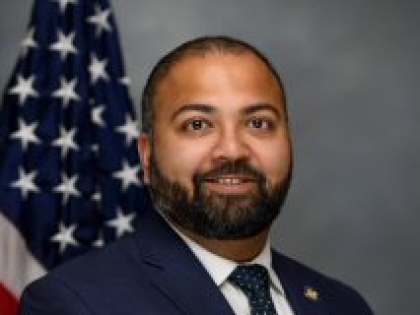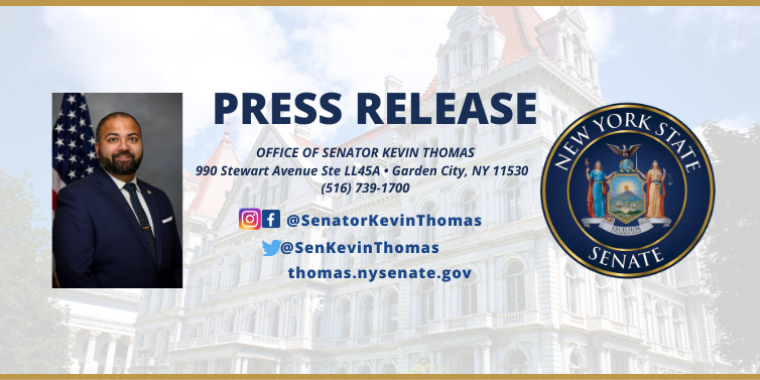
Lawmakers tighten New York’s gun laws
On Jan. 30, state lawmakers approved the first new gun control laws since the Secure Ammunition and Firearms Enforcement Act passed in 2013.
Gun control advocates cheered the further tightening of New York’s laws, which address bump stocks and recent pushes to arm teachers. Opponents, including local sport shooters and the National Rifle Association, were less impressed.
The new laws, which passed mostly along party lines, target guns in the classroom, people or students who have guns in the home and may be mentally unstable, bump stocks and background checks (see box).
Many of the bills had long been goals of Democrats, but had been blocked from a vote by the Republican majority in the Senate. After winning control of both houses in November, Democrats were eager to get the bills to the desk of Gov. Andrew Cuomo, who is expected to sign them.
Sen. Kevin Thomas, a Levittown Democrat, supported a “red flag law,” known as the Extreme Risk Protection Order bill, to keep guns out of the hands of those who might be unstable. Republicans voted down several Democratic measures last spring before Thomas was elected to his seat and joined several Democrats in co-sponsoring it this month.
“Our communities deserve real action to protect our families from gun violence,” said Senator Kevin Thomas. “Gun violence is a scourge that continues to plague Americans across the nation. My bill will keep New York families and individuals safe by curbing access to guns to people who pose a risk to themselves or others. This law will save lives in our communities.”
Sen. Todd Kaminsky, a Long Beach Democrat, introduced the bill to keep school districts from arming teachers. Last September, State Education Commissioner MaryEllen Elia issued a memorandum banning public schools from using federal money for that purpose as well, after media reports that U.S. Secretary of Education Betsy DeVos was weighing the benefits. DeVos later said that she had not intended to act.
“The gun-safety legislation we passed today is a comprehensive set of common-sense bills designed to get dangerous weapons out of the hands of dangerous people,” Kaminsky said, “while ensuring that we do not enact misguided and reckless proposals like arming classroom teachers.”
Robert Gaafar, a survivor of the shooting at the Route 91 Harvest Festival in Las Vegas in October 2017, which left 58 dead and more than 800 others injured, said he was pleased to see the State Legislature act to decrease gun violence.
He lauded the legislation’s “red flag law,” which he called “a great step for safety,” and the ban on bump stocks, which were used by the gunman at the concert. Gaafar, 35, of Rockville Centre, added that he agreed with banning teachers from having firearms in school, noting that he supports alternative security measures in schools, such as double-lock doors, and more cameras and security guards.
“Whenever we have these laws passed, it’s only a good thing,” he said of the state legislation. “Lives will be saved. Of course I’d love these laws passed federally, but it’s just going to take time.”
Tom King, president of the New York Rifle and Pistol Association and an NRA member, said in a statement printed in the New York Daily News that the new restrictions would not make people safer, adding that they represent an overreach of power by Democrats.
“This is exactly what we feared” when the Democrats won control of the Senate last November, King said. “This is a case of the Democrats coming in, running wild, writing bills on everything they can think of, and then trying to pass as much of it as they can.”
Just after the Senate’s Jan. 29 vote, King wrote on Facebook, while sitting outside the Senate chamber, that conservatives should reflect on their recent electoral losses. “The results of those failures are coming to fruition right now, as the now Democratic-controlled Senate passes anti-gun bill after anti-gun bill by a 40-23 margin,” he wrote. “It’s sad we could have prevented this by simply exercising our right to vote.”
NRA representatives wrote on the organization’s website that the new package of laws was “nothing more than a resounding indictment of the SAFE Act’s complete failure.”
“Over half a decade later, there is zero evidence the SAFE Act has done anything more than punish law-abiding gun owners,” the website stated. “During Cuomo’s tenure, nearly a million New Yorkers have left the state … What has become abundantly clear is that this is nothing more than political pandering to his extreme anti-gun base.”
Last year, the Herald published a 10-part investigative series, “Safety and the 2nd,” exploring the gun control debate from several angles, including the perspectives of those who opposed the SAFE Act and further gun laws.
At a protest in Albany in April, gun proponents said that passing more restrictive gun laws has not worked since the first national legislation in 1934. The laws usually end up hurting people who own guns legally and are not violent, they said.
“The majority of law-abiding citizens should not be punished en masse for the actions of the mentally imbalanced,” said Christopher Pajarillo, an Army veteran who served in Honduras and Panama and fought in 1991 in Operation Desert Storm in Iraq, otherwise known as the first gulf war. “The people against gun control were not invited to the conversations … If the common-sense gun laws that have been in place since 1934 aren’t working, they might want to think about getting rid of them and talking to us about what we would want.”
Thomas shrugged off criticism from gun rights advocates. “All New Yorkers deserve to live in a safe community,” he said. “I will continue to work with my Democratic colleagues to ensure we pass sensible legislation that keep our streets and communities safe.”
Ben Strack and Brian Stieglitz contributed to this story.
On Jan. 30, state lawmakers approved the first new gun control laws since the Secure Ammunition and Firearms Enforcement Act passed in 2013.
Gun control advocates cheered the further tightening of New York’s laws, which address bump stocks and recent pushes to arm teachers. Opponents, including local sport shooters and the National Rifle Association, were less impressed.
The new laws, which passed mostly along party lines, target guns in the classroom, people or students who have guns in the home and may be mentally unstable, bump stocks and background checks (see box).
Many of the bills had long been goals of Democrats, but had been blocked from a vote by the Republican majority in the Senate. After winning control of both houses in November, Democrats were eager to get the bills to the desk of Gov. Andrew Cuomo, who is expected to sign them.
Sen. Kevin Thomas, a Levittown Democrat, supported a “red flag law,” known as the Extreme Risk Protection Order bill, to keep guns out of the hands of those who might be unstable. Republicans voted down several Democratic measures last spring before Thomas was elected to his seat and joined several Democrats in co-sponsoring it this month.
“Our communities deserve real action to protect our families from gun violence,” said Senator Kevin Thomas. “Gun violence is a scourge that continues to plague Americans across the nation. My bill will keep New York families and individuals safe by curbing access to guns to people who pose a risk to themselves or others. This law will save lives in our communities.”
Sen. Todd Kaminsky, a Long Beach Democrat, introduced the bill to keep school districts from arming teachers. Last September, State Education Commissioner MaryEllen Elia issued a memorandum banning public schools from using federal money for that purpose as well, after media reports that U.S. Secretary of Education Betsy DeVos was weighing the benefits. DeVos later said that she had not intended to act.
“The gun-safety legislation we passed today is a comprehensive set of common-sense bills designed to get dangerous weapons out of the hands of dangerous people,” Kaminsky said, “while ensuring that we do not enact misguided and reckless proposals like arming classroom teachers.”
Robert Gaafar, a survivor of the shooting at the Route 91 Harvest Festival in Las Vegas in October 2017, which left 58 dead and more than 800 others injured, said he was pleased to see the State Legislature act to decrease gun violence.
He lauded the legislation’s “red flag law,” which he called “a great step for safety,” and the ban on bump stocks, which were used by the gunman at the concert. Gaafar, 35, of Rockville Centre, added that he agreed with banning teachers from having firearms in school, noting that he supports alternative security measures in schools, such as double-lock doors, and more cameras and security guards.
“Whenever we have these laws passed, it’s only a good thing,” he said of the state legislation. “Lives will be saved. Of course I’d love these laws passed federally, but it’s just going to take time.”
Tom King, president of the New York Rifle and Pistol Association and an NRA member, said in a statement printed in the New York Daily News that the new restrictions would not make people safer, adding that they represent an overreach of power by Democrats.
“This is exactly what we feared” when the Democrats won control of the Senate last November, King said. “This is a case of the Democrats coming in, running wild, writing bills on everything they can think of, and then trying to pass as much of it as they can.”
Just after the Senate’s Jan. 29 vote, King wrote on Facebook, while sitting outside the Senate chamber, that conservatives should reflect on their recent electoral losses. “The results of those failures are coming to fruition right now, as the now Democratic-controlled Senate passes anti-gun bill after anti-gun bill by a 40-23 margin,” he wrote. “It’s sad we could have prevented this by simply exercising our right to vote.”
NRA representatives wrote on the organization’s website that the new package of laws was “nothing more than a resounding indictment of the SAFE Act’s complete failure.”
“Over half a decade later, there is zero evidence the SAFE Act has done anything more than punish law-abiding gun owners,” the website stated. “During Cuomo’s tenure, nearly a million New Yorkers have left the state … What has become abundantly clear is that this is nothing more than political pandering to his extreme anti-gun base.”
Last year, the Herald published a 10-part investigative series, “Safety and the 2nd,” exploring the gun control debate from several angles, including the perspectives of those who opposed the SAFE Act and further gun laws.
At a protest in Albany in April, gun proponents said that passing more restrictive gun laws has not worked since the first national legislation in 1934. The laws usually end up hurting people who own guns legally and are not violent, they said.
“The majority of law-abiding citizens should not be punished en masse for the actions of the mentally imbalanced,” said Christopher Pajarillo, an Army veteran who served in Honduras and Panama and fought in 1991 in Operation Desert Storm in Iraq, otherwise known as the first gulf war. “The people against gun control were not invited to the conversations … If the common-sense gun laws that have been in place since 1934 aren’t working, they might want to think about getting rid of them and talking to us about what we would want.”
Thomas shrugged off criticism from gun rights advocates. “All New Yorkers deserve to live in a safe community,” he said. “I will continue to work with my Democratic colleagues to ensure we pass sensible legislation that keep our streets and communities safe.”


